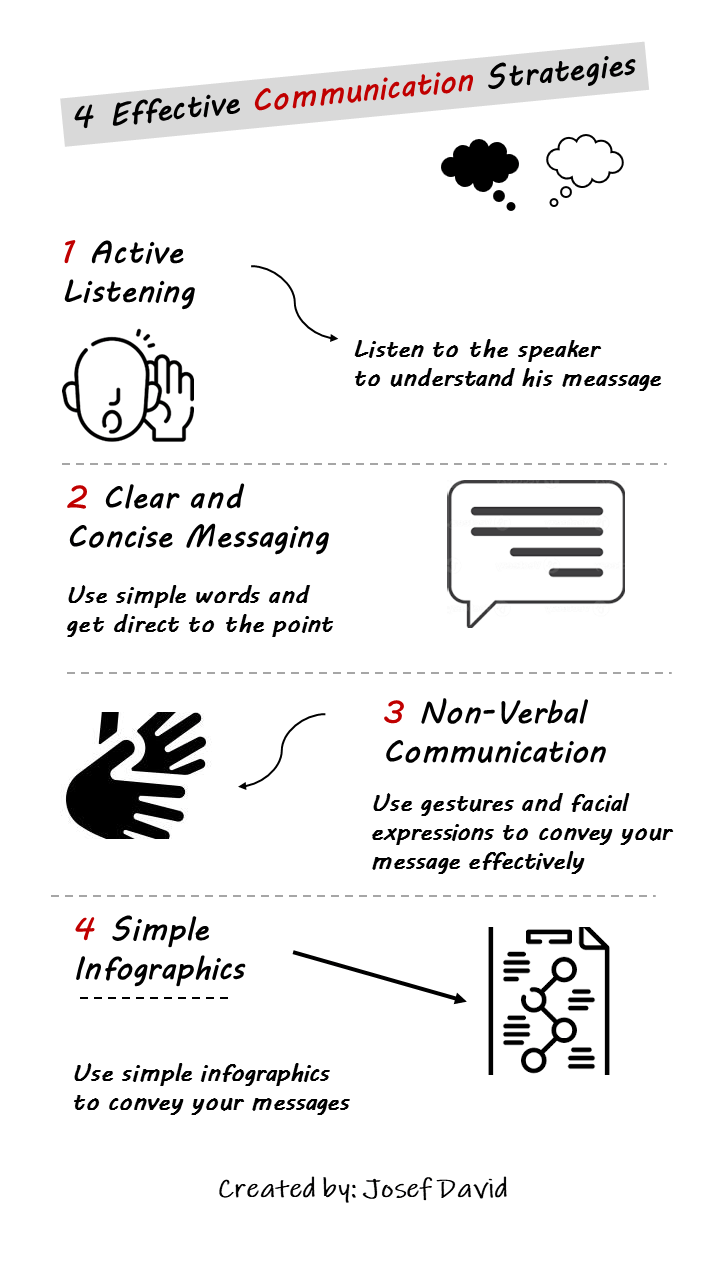In the bustling world of today, effective communication is a vital skill that can make or break your personal and professional relationships. It is the cornerstone of successful interactions, fostering understanding, building trust, and promoting transparency. However, not everyone is naturally gifted with this skill. The good news is that communication skills can be honed and improved over time. Here are four practical ways to enhance your communication skills, with a special focus on creating simple infographics.
1. Active Listening
The first step towards improving your communication skills is to become an active listener. Active listening involves fully focusing on the speaker, understanding their message, responding thoughtfully, and then remembering what has been said. It’s not just about hearing the words; it’s about comprehending and interpreting them correctly. This skill allows you to engage more effectively in conversations, showing respect for the speaker’s thoughts and feelings.
2. Clear and Concise Messaging
Clarity and conciseness are key in effective communication. Avoid using jargon or complex language that could confuse your audience. Instead, use simple words and phrases that are easily understood. Be direct and to the point to ensure your message gets across without any misunderstanding.
3. Non-Verbal Communication
Non-verbal cues play a significant role in how we communicate with others. Body language, facial expressions, gestures, eye contact, and even tone of voice can convey more information than words alone. By being aware of these non-verbal signals and using them effectively, you can enhance your overall communication skills.
4. Creating Simple Infographics
In our digital age where information overload is common, infographics have emerged as a powerful tool for effective communication. They present complex data visually, making it easier for people to understand and remember information.
Creating simple infographics doesn’t require you to be a graphic design expert. There are numerous online tools available that offer user-friendly interfaces and templates to help you create your own infographics. Here’s how you can use them to improve your communication skills:
a. Simplify Complex Information: Infographics can distil complex information into digestible, easy-to-understand visuals. This is particularly useful when dealing with data-heavy content or explaining intricate processes.
b. Engage Your Audience: Infographics are visually appealing and can easily grab the attention of your audience. They can make your content more engaging, thereby improving communication.
c. Enhance Memory Retention: Studies have shown that people remember visuals better than text. By incorporating infographics into your communication strategy, you can enhance memory retention, ensuring your message sticks.
d. Increase Shareability: Infographics are highly shareable, especially on social media platforms. This can help extend the reach of your message, improving communication on a broader scale.
In conclusion, improving communication skills is a continuous process that requires conscious effort and practice. By incorporating these four strategies – active listening, clear and concise messaging, non-verbal communication, and creating simple infographics – you can significantly enhance your ability to communicate effectively with others. Remember, good communication is not just about speaking or writing well; it’s about understanding and being understood.
